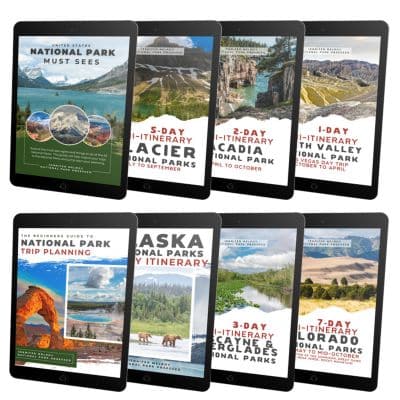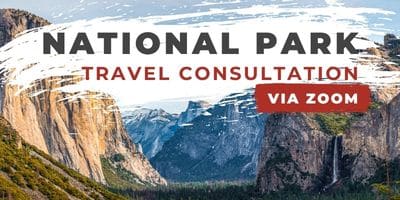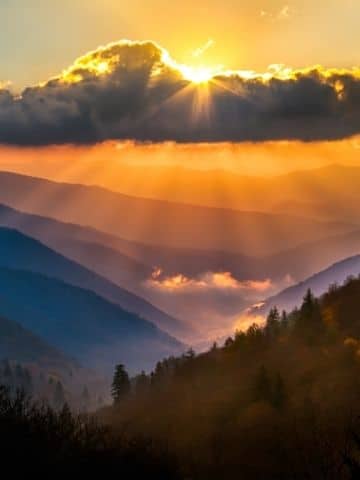
The Complete Guide to Visiting Great Smoky Mountains National Park in 2024
- Jennifer Melroy
- Last Modified July 27, 2024
- First Published on October 31, 2020
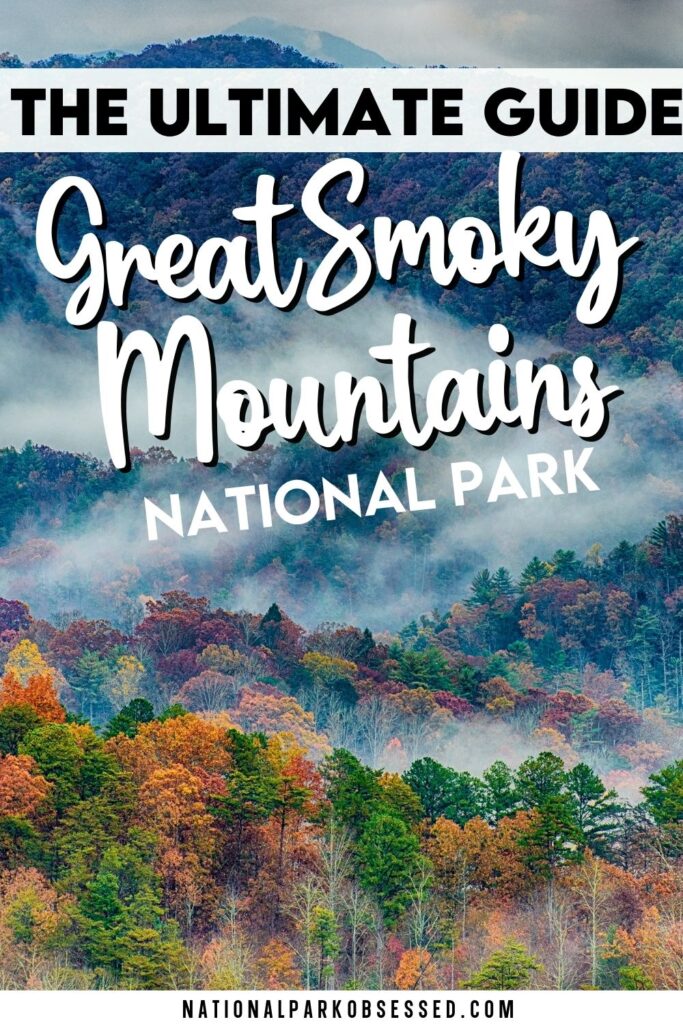
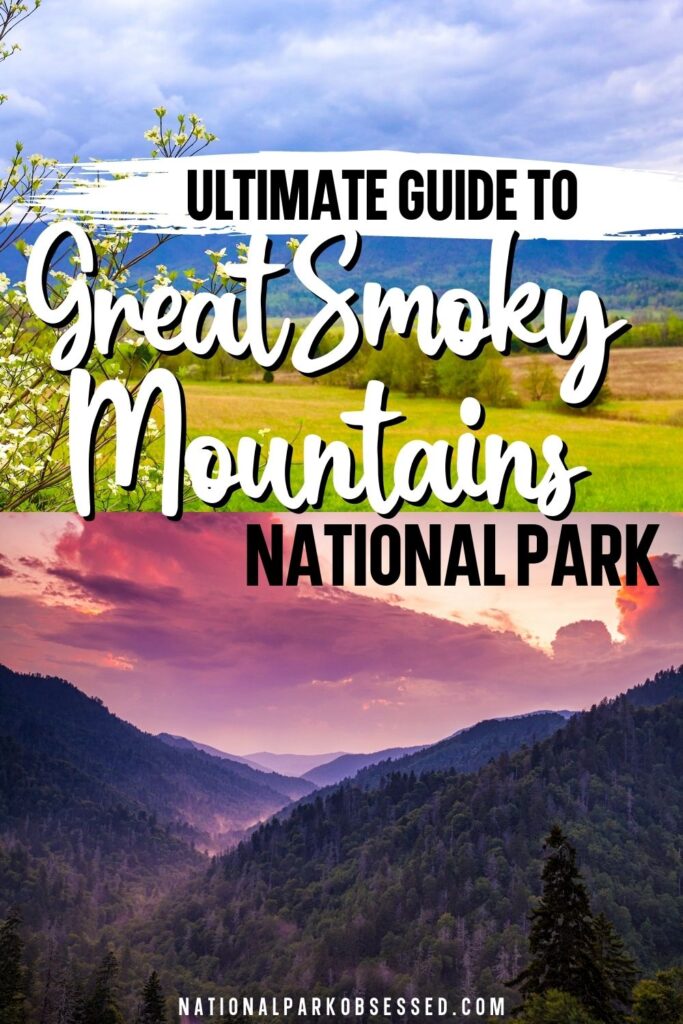
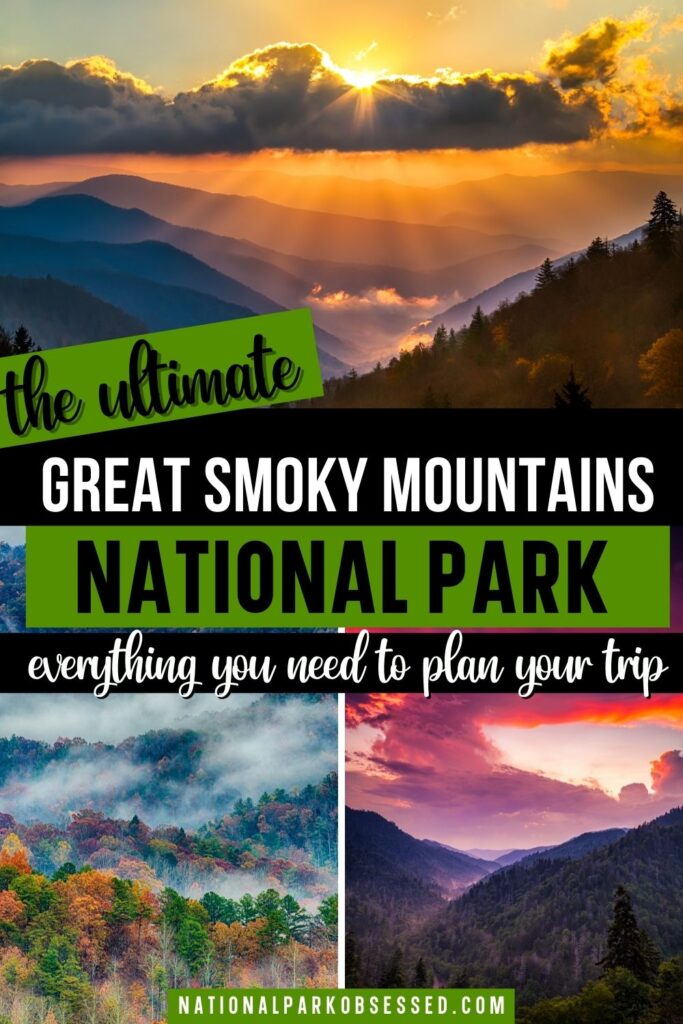
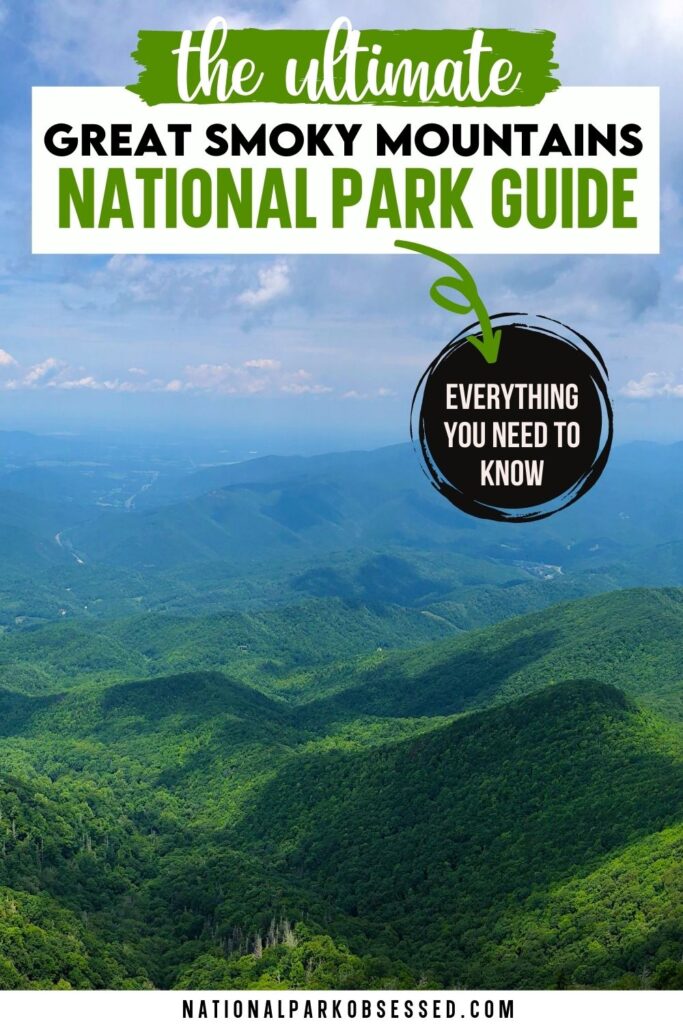
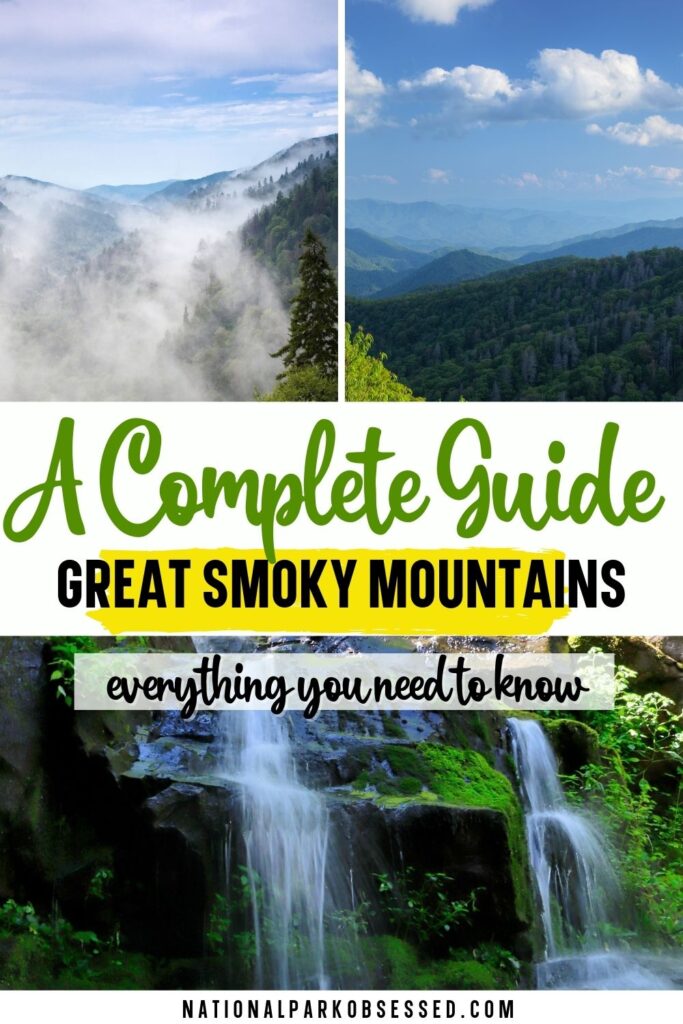
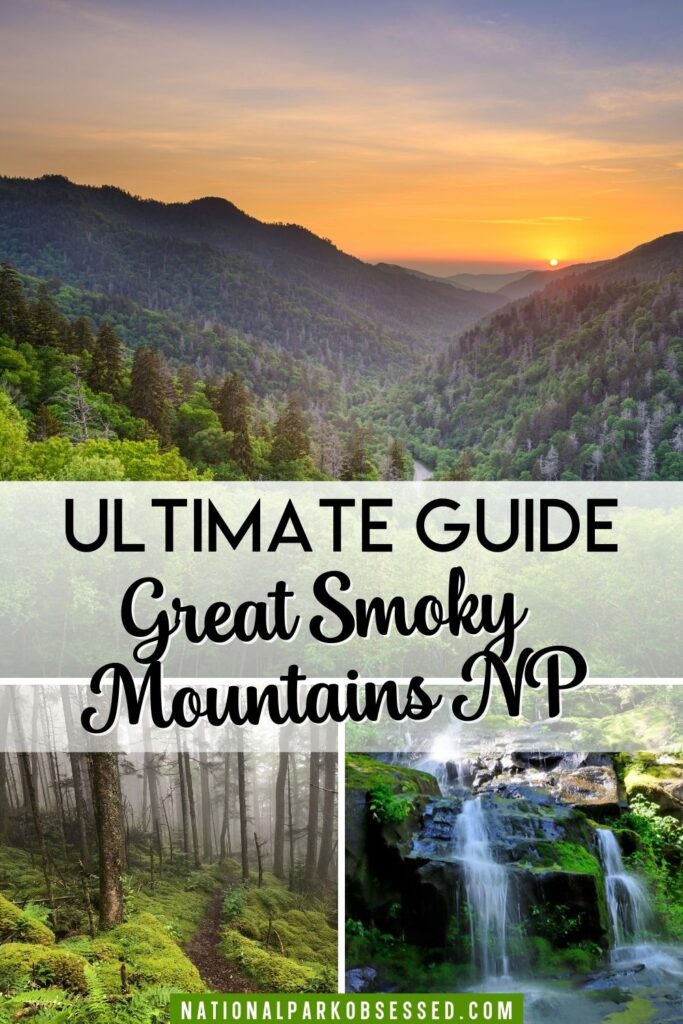

Rolling mountain hills rise out of the smoky-like fog, this scene is one of the highlights of Great Smoky Mountains National Park. This HUGELY popular national park is one of the gems of the eastern National Parks.
Visiting Great Smoky Mountains National Park should be on your bucket list no matter what. As one of the most popular national parks, planning ahead is an important part of planning a trip to the Smoky Mountains.
If you are planning a trip to Great Smoky Mountains National Park and need some help planning your trip, this is our starter guide for visiting Great Smoky Mountains National Park. We often have detailed, in-depth guides to Great Smoky Mountains National Park trip planning and will link to these where appropriate to make your trip planning as easy as possible.
The article will discuss all aspects of visiting Great Smoky Mountains National Park, including:
Planning to explore the Southeast? Download your free Southeast National Park Checklist HERE.
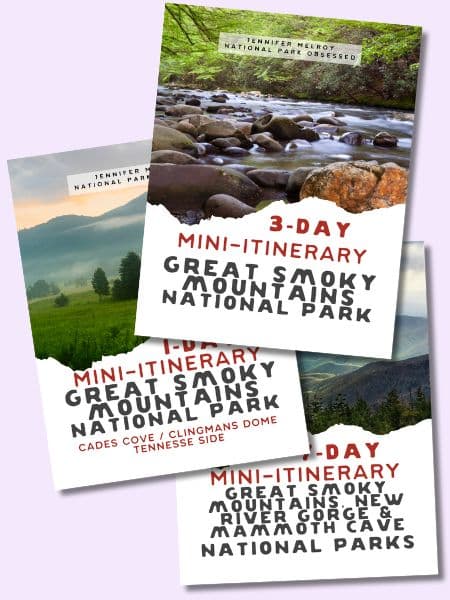
Does a Great Smoky Mountains Trip Planning Leave You Feeling Overwhelmed?
Jump right into booking your Great Smoky Mountains National Park trip with our expertly designed, pre-made, downloadable National Park itineraries.
Articles about XXX National Park
General Information on Visiting Great Smoky Mountains
Great Smoky Mountains National Park Lodging
Itineraries for Great Smoky Mountains National Park
Downloadable Itineraries for Great Smoky Mountains National Park
Looking for an itinerary specially designed for you? Let National Park Obsessed’s founder design the perfect itineary just for you. Get a Custom National Park Itinerary Here. Or do you just want to chat 1-on-1 with a Natioanl Park planning expert? Book a National Park Travel Consultation.
Other Articles featuring Great Smoky Mountains National Park
- Best National Parks for Spring
- Best National Parks for Summer
- Best National Parks for Fall
- Best National Parks for Non-Hikers
- Best National Park Day Hikes
Map of Great Smoky Mountains National Park
This is the official park map. It provides a general overview of the park and popular attractions such as Cades Cove and Clingmans Dome/Kuwohi are marked. Click here to download a PDF of the Great Smoky Mountains National Park Map.
Great Smoky Mountains National Park Basics
- Region: Southeast
- State: Tennessee / North Carolina
- Park Size: 522,419 acres (816.28 sq miles) (2,114.16 sq km)
- Location: Swain and Haywood counties in North Carolina; Sevier, Blount, and Cocke counties in Tennessee
- Closest Cities: Gatlinburg and Townsend, Tennessee; Cherokee, North Carolina
- Busy Season: May to September
- Visitation: 13.3 million visitors (in 2023)
- Official Website: NPS.gov
How much does Great Smoky Mountains National Park Cost?
Great Smoky Mountains National Park does not charge an entrance fee.
When is Great Smoky Mountains National Park Open?
Great Smoky Mountains National Park is open year-round.
Are dogs allowed in Great Smoky Mountains National Park?
Yes, pets are welcome in Great Smoky Mountains National Park but are limited to developed areas such as roads, parking areas, picnic areas, and campgrounds. Pets are not allowed on most of the trails in the park. Please review the Great Smoky Mountains Pet Policy before bringing your dog to Great Smoky Mountains.
Where are Great Smoky Mountains National Park’s visitor centers?
- Cades Cove Visitor Center – Open year-round
- Oconaluftee Visitor Center – Open year-round
- Sugarlands Visitor Center – Open year-round
- Clingmans Dome Visitor Contact Station – When the road is open.
Land Acknowledgment
The National Park known as Great Smoky Mountain National Park sits on S’atsoyaha (Yuchi) and ᏣᎳᎫᏪᏘᏱ Tsalaguwetiyi (Cherokee, East) land. Today, the Eastern Band of Cherokee Indians has a smallholding of land along the southern boundary of the park. This area is known as the Qualla Boundary and consists of land purchased by the Cherokee in the 1840s and 1850s.
Thank you to the Native Land Digital for making the ancestorial land claims accessible to all. Native Land Digital is a registered Canadian not-for-profit organization with the goal to create spaces where non-Indigenous people can be invited and challenged to learn more about the lands they inhabit, the history of those lands, and how to actively be part of a better future going forward together.
When was Great Smoky Mountains National Park Created?
Great Smoky Mountains National Park preserves a vast expanse of the southern Appalachian Mountains ecosystem including its scenic beauty, extraordinary diversity of natural resources, and rich human history, and provides opportunities for the enjoyment and inspiration of present and future generations.
Great Smoky Mountains National Park Foundation Document
By the early 1920s almost two-thirds of what is today Great Smoky Mountains National Park had been logged or burned due to logging operations. Local business and early visitors to the region realized that the area’s natural beauty was being systematically ruined. Around the same time, the National Park Service was looking to create a southeastern National Park. The groups worked together and got Great Smoky Mountains National Park authorized in 1926.
There were limited federal funds to acquire land and donations were raised to purchase the land including a $5 million dollar donation from John D. Rockefeller. The parkland was acquired piece by piece and the park was officially established on June 15, 1934.
Great Smoky Mountains National Park was designated an International Biosphere Reserve in 1976. It was certified as a UNESCO World Heritage Site in 1983, and became a part of the Southern Appalachian Biosphere Reserve in 1988.
Fun Facts about Great Smoky Mountains National Park
- Great Smoky Mountains National Park is home to some of the worlds oldest mountains. The Appalachian Mountain Range is estimated to be between 200 and 300 million years old
- The Smokies is the most biodiverse national park in the National Park System. Over 19,000 species have been documented within the park; including at least 40 species of trees, 65 species of mammals, 200 varieties of birds, 67 native fish species, and more than 80 types of reptiles and amphibians.
- Great Smoky Mountains National Park is known as the “Salamander Capital of the World”. There are over 30 species in the park.
- Great Smoky Mountains National Park is the MOST visited National Park in the US. It is also one of the most visited National Park units. (More information on the difference between a National Park and a National Park Unit)
- About 30% of the US population lives within 500 miles of the park.
- Great Smoky Mountains has more than 800 miles of hiking trails, 2,900 miles of streams and has preserved more than 90 historical structures.
- The highest peak in the park is Clingmans Dome at 6,643 feet.
- The Appalachian Trail visits Clingmans Dome, marking the highest point along its 2,200-mile journey from Springer Mountain, Georgia to Katadin, Maine.
- Great Smoky Mountains National Park is the first national park to be purchased with federal funds.
- The only accommodations in the park is the LeConte Lodge which was built in 1926 and gets it’s supplies via Llama trains.
- Since 1931, over a half billion people have visited the park.
How Much Time Should I Spend Visiting Great Smoky Mountains National Park?
If you have a couple of hours in Great Smoky Mountains National Park, visit Clingsmand Dome.
If you have one day in Great Smoky Mountains National Park, visit Cades Cove or Cataloochee Valley.
If you have two days in Great Smoky Mountains National Park, visit Cades Cove and Cataloochee Valley.
If you have three or more days in Great Smoky Mountains National Park, explore Roaring Forks and hike to Laurel Falls.

Does a Great Smoky Mountains Trip Planning Leave You Feeling Overwhelmed?
Jump right into booking your Great Smoky Mountains National Park trip with our expertly designed, pre-made, downloadable National Park itineraries.
Things to do in Great Smoky Mountains National Park
Hiking in Great Smoky Mountains National Park
- Laural Falls – 2.4 miles (round trip) – 400 ft elevation gain – A popular hike to a nice-sized waterfall. The trail takes you to the base of a two-drop waterfall.
- Abrams Falls – 5.5 miles (round trip) – 630 ft elevation gain – This trail traverses a pine-oak forest to a short but powerful waterfall. Please do NOT swim at the pool at the base of the falls.
- Chimney Tops – 4.4 miles (round trip) – 1,350 ft elevation gain – A steep hike to a very scenic overlook. This trail is very rocky.
- Alum Cave – 5 mile (round trip)-1,200 ft elevation gain – This trail climbs upward through a old growth forest before seeing an Arch Rock and has mountain views.
Best Things to Do in Great Smoky Mountains National Park
- Cades Cover Loop
- Hike Clingmans Dome
- Roaring Fork Motor Nature Trail
- Drive the Dragon
- Hike on the Appalachian Trail
- Hike to a Waterfall
Best Things to See in Great Smoky Mountains National Park
- Fontana Dam
- Newfound Gap
- Cataloochee Valley
- The Sinks
- Walker Sisters’ Corn Crib
- Mingus Mill
Best Guided Tours of Great Smoky Mountains National Park
Great Smoky Mountains National Park Wildlife
- Black Bear
- White-tailed Deer
- Elk
- Hellbenders
- Synchronous Fireflies
- Wild Turkey
Where to stamp your National Parks Passport Book in Great Smoky Mountains National Park?
The National Park Passport Book is the BEST and cheapest National Park souvenir. Every National Park Obsessed person should have one of these books.
If you are new to the National Parks, you can learn more about the National Parks Passport program here or jump right in by ordering:
- The ever-popular Classic National Parks Passport
- Get 15% Off Your Next Order at the America’s National Parks Online Store with Code: NATIONALPARKOBSESSED at Checkout
- Or get the National Park Obsessed’s National Park Passport & Journal
IMPORTANT: Do NOT stamp your government-issued passport.
There are 19 official stamps for Great Smoky Mountains National Park. Here is the list of National Park Passport Stamps you can get in Great Smoky Mountains National Park:
- 2017 Total Solar Eclipse
- 75th Anniversary 1934-2009
- Bryson City, NC
- Cades Cove
- Cades Cove, TN
- Cataloochee Campground, NC
- Clingmans Dome
- Cosby
- Deep Creek Campground, NC
- Elkmont, TN
- Gatlinburg, TN
- National Park
- NPS Centennial
- NPS Centennial
- Oconaluftee, NC
- Smokemont
- Sugarlands
- Townsend, TN (Reported Missing on December 2023)
- Tremont, TN
Bonus Stamps
- Embracing The Outdoors
- Image Of Black Bear
- Junior Ranger
- Leconte Lodge “I Hiked It”
- Leconte Lodge Est. 1925
- Sevierville
- Take A Giant Leap Outside
Great Smoky Mountains National Park Passport Stamp Locations
Here are all the locations to find the Great Smoky Mountains National Park Passport Stamps. Not every stamp is available at every location.
- Cades Cove Permits Ranger Station
- Cades Cove Visitor Center
- Cades Cove Welcome Kiosk
- Cataloochee Campground Host
- Clingmans Dome Visitor Contact Station
- Cosby Campground Entrance Station
- Deep Creek Campground Check-In Station
- Elkmont Campground Ranger Station
- Gatlinburg Welcome Center
- GSM Institute at Tremont Bookstore
- LeConte Lodge Gift Shop (BONUS ONLY)
- Oconaluftee Visitor Center
- Sevierville Chamber of Commerce Visitor Center
- Smokemont Campground Ranger Station
- Sugarlands Visitor Center NPS Information Desk
- Swain County Heritage Museum & Visitor Center
- Townsend Visitor Center
Frequently Asked Questions about Great Smoky Mountains National Park
Why is the park called Great Smoky Mountains?
The park gets its name from the Cherokee. They referred to this area as “Shaconage” (Sha-Kon-O-Hey), this word roughly translates to “Land of Blue Smoke.” Hence the name.
Is Great Smoky Mountain National Park worth visiting?
Yes, there is a reason why the Smokies are the most visited National Park (and it’s not just because about half the US population is within a days drive).
How many days do you need in Great Smoky Mountains National Park?
How many days do you have? You could spend a lifetime hiking in the Smokies and never see it all. I suggest spending 2 full days in the park. This will allow you to hit most the major highlights along with hike a few of the park’s more iconic trails without feeling rushed. That said, if you only have 1 day in the Smokies make the most of it.
>>> How long should I spend in XXX National Park? Is X days enough time to visit this park?
What is the most popular destination in the Smoky Mountains National Park?
The most popular destination in the Smoky Mountains National Park includes Cades Cove, Chimney Tops, Laurel Falls, and Clingmans Dome.
Are there grizzly bears in Great Smoky Mountains?
No, there are no grizzly bears in the Smokies. If you see a brown colored bear in the Smokies, it is a cinnamon black bear. The color of the bear fur does designate the species. Black bears come in a range of colors from light grey to dark black to light brown. Grizzly Bears can come from light blond to dark brown.
How many black bears are in the Smoky Mountains?
There are about 1,500 black bears in the Great Smoky Mountains. This works out to about 2 black bears per square mile giving the park one of the highest densities of black bears in the country. Black bears are found throughout the park at all elevations and can be found pretty much anywhere in the park.
How likely am I to see a bear in the Smoky Mountains?
Odds are pretty good that if you spend more than a day in the Smokies that you will see a bear. There are 1,500 of them and they are found through the park. The best time to see bears is in the spring and summer during the early morning and late evenings. Check with the ranger at the visitor center for the latest sighting.
How common are bear attacks in Smoky Mountains?
They are EXTREMELY RARE and almost always involve a bear that has been fed by humans or a human ignoring safety rules. With 1,500 bears and 12 million visitors, it is almost a given that there will be a few negative bear encounters in the Smokies every year. There is less than 1 death a year due to a bear attack in the park.
Are there poisonous snakes in the Smoky Mountains?
There are 23 species of snake in the Smokies. Of those, only two are venomous. These are the Northern Copperhead and Timber Rattlesnake.
National Parks Near Denali National Park
Check out this great 63 National Parks and get a FREE National Park Checklist. Count how many National Parks you have visited.
National Park Service units within a 4 hours drive
- Runs through the park
- Appalachian National Scenic Trail
- 1 hour
- Andrew Johnson National Historic Site
- Manhattan Project National Historical Park, Oak Ridge Unit
- 1.25 hours
- Carl Sandburg Home National Historic Site
- 1.5 hours
- Cumberland Gap National Historical Park
- Obed Wild and Scenic River
- 1.75 hours
- Blue Ridge Parkway
- 2 hours
- Big South Fork National River and Recreation Area
- Chickamauga and Chattanooga National Military Park
- 2.75 hours
- Little River Canyon National Preserve
- Russell Cave National Monument
- 3 hours
- Chattahoochee River National Recreation Area
- Kennesaw Mountain National Battlefield Park
- Martin Luther King, Jr. National Historic Site
- Mill Springs Battlefield National Monument
- 3.25 hours
- Stones River National Battlefield
- Guilford Courthouse National Military Park
- 3.5 hours
- Camp Nelson Heritage National Monument
- 3.75 hours
- Natchez Trace National Scenic Trail
- Natchez Trace Parkway
- 4 hours
- Birmingham Civil Rights National Monument
- Freedom Riders National Monument
- Mammoth Cave National Park
National Park Service units within a 8 hours drive
- 4.25 hours
- Abraham Lincoln Birthplace National Historical Park
- 4.5 hours
- Fort Donelson National Battlefield
- Ocmulgee Mounds National Historical Park
- Tuskegee Airmen National Historic Site
- Booker T. Washington National Monument
- 4.75 hours
- Horseshoe Bend National Military Park
- Tuskegee Institute National Historic Site
- 5 hours
- Andersonville National Historic Site
- Appomattox Court House National Historical Park
- 5.25 hours
- Jimmy Carter National Historic Site
- Shenandoah National Park
- 5.5 hours
- Shiloh National Military Park
- Fort Pulaski National Monument
- 5.75 hours
- Moores Creek National Battlefield
- 6 hours
- Brices Cross Roads National Battlefield Site
- Tupelo National Battlefield
- Petersburg National Battlefield
- 6.25 hours
- Fort Frederica National Monument
- Maggie L. Walker National Historic Site
- Richmond National Battlefield Park
- 6.5 hours
- Cumberland Island National Seashore
- Cedar Creek and Belle Grove National Historical Park
- Manassas National Battlefield Park
- 6.75 hours
- Fredericksburg and Spotsylvania National Military Park
- Harpers Ferry National Historical Park
- 7 hours
- Colonial National Historical Park
- George Washington Memorial Parkway
- Potomac Heritage National Scenic Trail
- Prince William Forest Park
- Wolf Trap National Park for the Performing Arts
- 7.25 hours
- Arlington House, The Robert E. Lee Memorial
- Fort Monroe National Monument
- Cape Hatteras National Seashore
- Fort Raleigh National Historic Site
- 7.5 hours
- Medgar and Myrlie Evers Home National Monument
- Gateway Arch National Park
- Ozark National Scenic Riverways
- Ste. Genevieve National Historical Park
- George Washington Birthplace National Monument
- Wright Brothers National Memorial
- 8 hours
- Gulf Islands National Seashore
- Vicksburg National Military Park
- Ulysses S. Grant National Historic Site
Final Thoughts on Great Smoky Mountains National Park
Do you have any questions about Great Smoky Mountains National Park or need help planning your National Park trips. Let me know in the comments or join me in my National Park Trip Planning Community!
Pin for Later: Visiting Great Smoky Mountains National Park: The Complete Guide

Jennifer Melroy
Hi, I'm Jennifer!
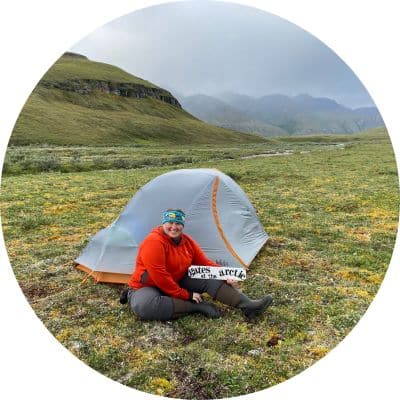
Welcome to the wonderful world of National Parks. I'm here to help you plan your NEXT amazing adventure through the United States National Parks and beyond. I want the national parks to be accessible to all.
I live in Tennessee, and when I'm home, you can find me hiking in the Smokies and the Cumberland Plateau.
58/63 National Parks
250+/423 National Park Units
Want to know more? Start Here.
ACKNOWLEDGEMENT OF LAND
On this site, we promote travel to the United States and beyond that are the traditional lands of Indigenous and First Nations peoples.
With respect, I make a formal land acknowledgment, extending my appreciation and respect to these lands’ past and present people.
To learn more about the people who call these lands home, I invite you to explore Native Land.
DISCLAIMER
National Park Obsessed assumes no responsibility or liability for any errors or omissions in the content of this site (NationalParkObsessed.com). The information contained in this site is provided with no guarantees of completeness, accuracy, usefulness or timeliness. You are encouraged to conduct your own due diligence before acting on the information provided on this site and should not rely on the opinions expressed here.
There is an inherent risk in all outdoor recreation activities, the reader assumes all responsibility for their own personal safety.
DISCLOSURE
We are a participant in the Amazon Services LLC Associates Program, an affiliate program designed to provide a means for us to earn fees by linking to Amazon.com and affiliated sites.
Privacy Policy • About Us • Contact
Select stock photography provided depositphotos
Copyright ©2023 National Park Obsessed, LLC
Last Updated on 27 Jul 2024 by Jennifer Melroy


